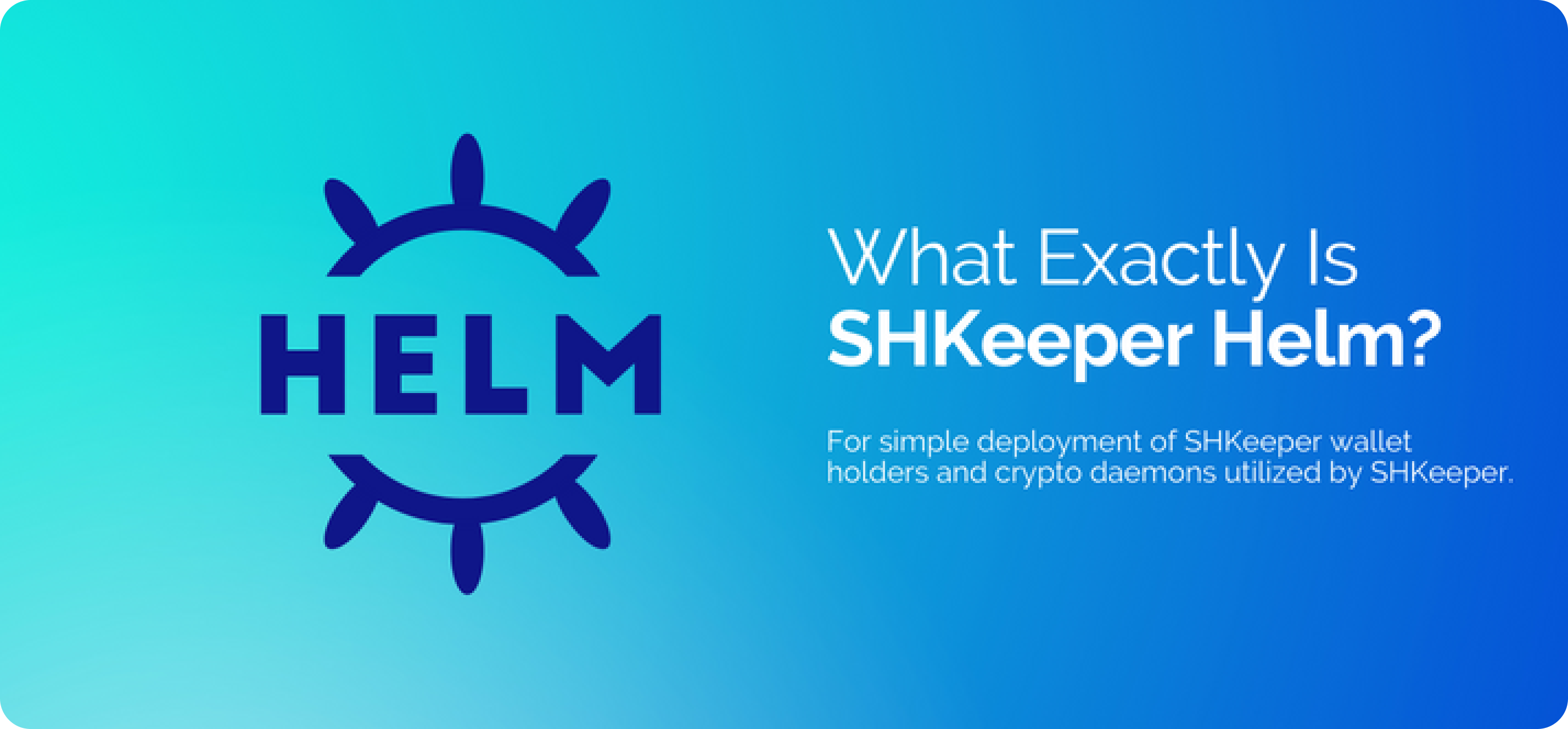What Exactly Is SHKeeper Helm?
We created a SHKeeper Helm for simple deployment of SHKeeper wallet holders and crypto daemons (now available in BTC, LTC, and DOGE) utilized by SHKeeper. You can quickly deploy it using Helm management on your Kubernetes cluster, and it will install everything for you. Following the installation of SHKeeper, the cluster will handle four deployments: shkeeper, dogecoind, litecoind, and bitcoind. On our Docker Hub account, all images are marked as public.

SHKeeper installation with Helm management
Requirements:
- kubectl
- helm
- Installation
First, we must clone the SHKeeper repository on our system.
git clone https://github.com/vsys-host/shkeeper-helm-docker.git
Second, check with kubectl that you are connected to the correct cluster before deploying SHKeeper. (We encourage using nodes with high network speed since crypto daemons first demand a large amount of network resources to sync blockchain.)
kubectl cluster-info
As a consequence of the command, you should receive output that describes the location of the Kubernetes control plane.
Third, if everything is in order, we can use Helm to deploy our Chart. Execute the helm install command.
helm install shkeeper ./shkeeper-helm-docker/helm/.
Chart should be deployed, as you can see.
Forth, to get the IP address of the SHKeeper web interface, use kubectl.
kubectl get svc -o wide
Find a service with the name shkeeper and grab its EXTERNAL-IP. The web interface runs on port 5000, therefore to access it, type:
EXTERNAL-IP]:5000
Issues
After installation, you may have problems using the SHKeeper Web-interface. (It may be inaccessible or overburdened.) This problem is most likely caused by blockchain synchronization for crypto daemons. You should be patient because it may take some time before the Web-interface is accessible. As a result, we propose using nodes with high network bandwidth.